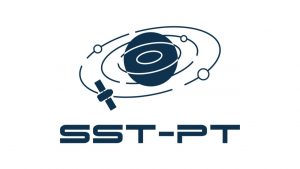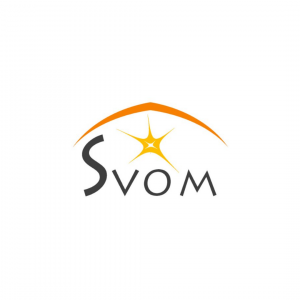Other Projects
Space Surveillance and Tracking (SST)
EUSST (EUropean Space Surveillance and Tracking) is a European program that aims to guarantee its own capacity for monitoring, characterizing and tracking objects that, moving in close-Earth orbits, may pose a real danger to space infrastructures, to missions access and movement in space and for the safety of citizens through the entry into the atmosphere of these same objects.
In order to mitigate these risks, it is important to research and track these objects, providing relevant information to interested entities. Thus, in 2014, the Space Surveillance Support Framework (SST) was established by the European Union, this decision resulted in the creation of an SST Consortium, currently composed of seven EU Member States, including Portugal.
For more information:

Space-based multi-band astronomical Variable Objects Monitor (SVOM)
The SVOM (Space-based multiband astronomical Variable Objects Monitor) project is a Chinese/French space mission dedicated to the detection and study of gamma-ray bursts, usually associated with the explosion of massive stars or the coalescence of extremely dense bodies such as neutron stars or black holes. These bursts are considered the brightest and most energetic events in the universe since the Big Bang, hence their great interest in the fields of astrophysics and cosmology.
The SVOM antenna is a terrestrial VHF antenna that will receive data from the SVOM satellite regarding gamma-ray detection alerts. This network of antennas will also be used to transmit some of the scientific data in near real-time.
This project is a collaboration between the Chinese Space Agency (CNSA), the Chinese Academy of Sciences (CAS), and the French Space Agency (CNES). The SVOM satellite is planned to be launched at the end of 2021 with a nominal mission period of 3 years.
For more information:

Copernicus Relays
The Copernicus Relays have existed since the first quarter of 2017, in the framework of the Space Strategy for Europe. To coordinate and promote activities around the Copernicus programme showing its benefits and opportunities for residents and businesses, the European Commission has created a network of Copernicus Ambassadors of which RAEGE-Az is a part.
The ambassadors must ensure, at local and regional level, that user needs are integrated into the programme in a way that maximises its use at local and operational level.
This network is a wide tool of initiatives designed to provide information about the programme and address any concerns citizens may have about access to Copernicus data and information. They are also responsible for disseminating the opportunities created by the Commission to support the development of innovative applications and new business models.
For more information:
